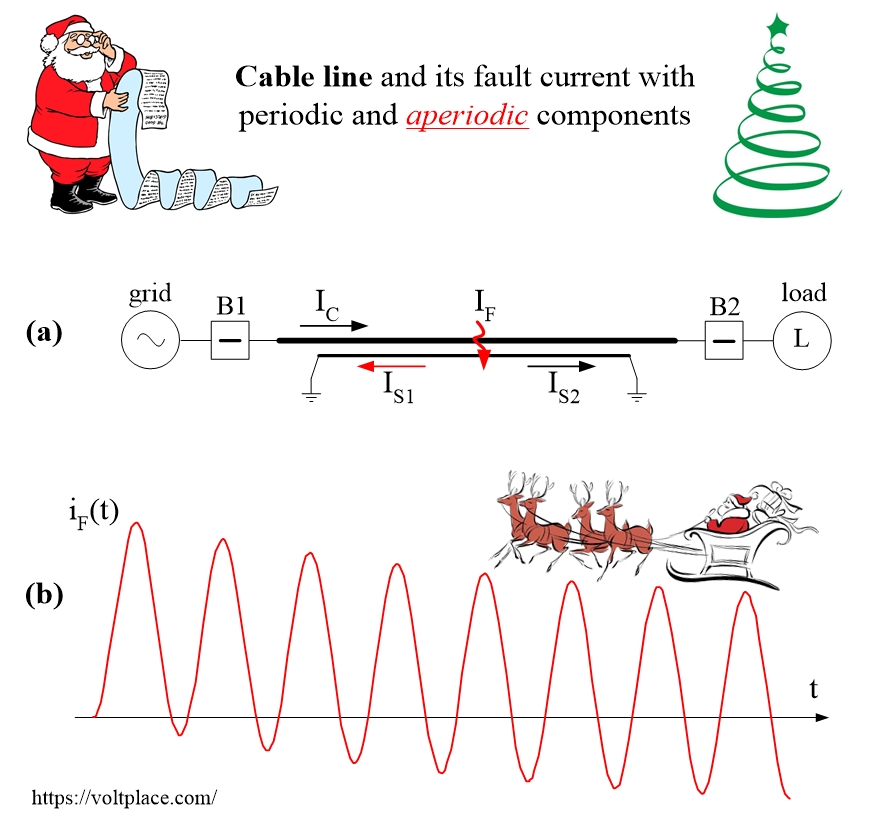
Dear Santa, bring an aperiodic component back!
High-voltage cables must have a conductive metal screen (sheath). The selection of the screen cross-section is very important. Without selecting the screen cross-section (and bonding/grounding scheme), it is impossible:
✅ To ensure the resistance of the cable screen to fault (short-circuit) currents.
✅ To perform a thermal calculation of the cable line and select the core cross-section.
The presence of a screen provides:
✅ Equalization of the electric field inside the cable insulation.
✅ Elimination of the electric field outside the cable.
To solve these problems, it is enough to have a screen with a minimum cross-section. However, unfortunately, then there are great risks of damaging the screen in case of a fault in the cable.

FIGURE (a) shows the cable through which the load is connected to the electrical grid. In case of a short-circuit in such a cable, the fault (F) current passes through the core (C) to the place of damaged insulation. Then it passes from the core to the screen (S), and then the current passes along the screen to its grounding points, where it goes into the ground.
Even when the short-circuit occurred exactly in the middle of the cable line route, most of the current still passes towards the supply grid and its neutral, that is Is1>Is2. In case when a short-circuit occurred at the beginning of the cable line (close to the grid), we have Is1>>Is2. Therefore, it is accepted that the screen cross-section should be selected for the entire grid short-circuit current (and not for a part of it), that is Is1=If.
Cable catalogs and standards (IEC, CIGRE) have a simple formulas that allows you to select a sufficient screen cross-section depending on:
✅ Short-circuit current (If).
✅ Short-circuit current duration.
The strangeness of all calculation methods, mentioned above, lies in the fact that all these documents take into account only the periodic component of the short-circuit current, without taking into account the aperiodic one.
FIGURE (b) shows short-circuit current which has periodic and aperiodic components. Although in the energy industry, when calculating the thermal resistance of current-carrying parts of equipment, two current components (periodic and aperiodic) are always taken into account, somehow this does not happen when choosing a cable. The selection of the screen cross-section is carried out only according to the periodic component, and heating from the aperiodic component is not taken into account. I think we should fix this.
Failure to take into account the heating caused by the aperiodic component of the short-circuit current can lead to serious overheating of the screen on a significant part of the cable route. This is very dangerous for cable insulation and may lead to the need to replace even long parts of the cable.
I will tell how to take into account such heating in one of the next posts. I will also express my thoughts about IEC 60949, which I consider not only useless, but also harmful.
